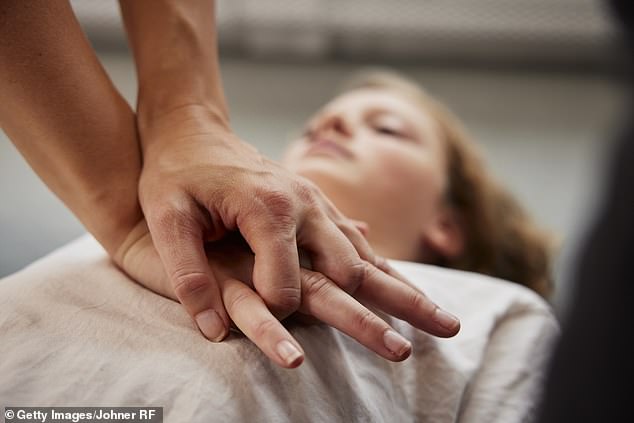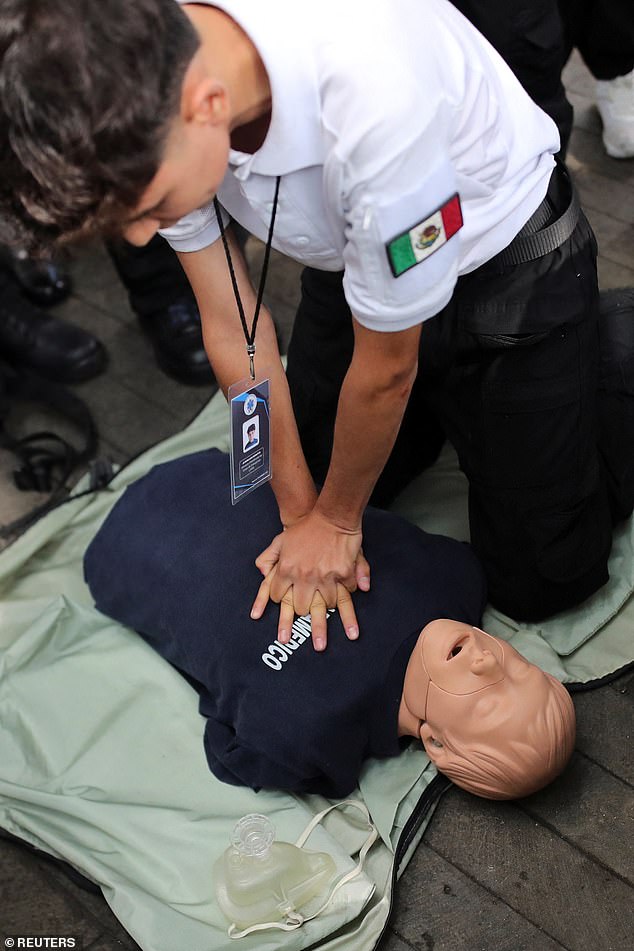One in three Britons are afraid to perform CPR on women because they are worried about touching their breasts, a study reveals.
The same proportion of men (33 percent) also fear being accused of “inappropriate” touching when performing chest compressions on women.
However, only 13 per cent of women have the same reservations, according to the survey of 1,000 UK adults by St John Ambulance.
The first aid charity warned that the sexual taboo increases the risk of women dying from cardiac arrest, stressing: “When it comes to CPR, all bodies are equal.”
Previous research found that only 68 percent of women are likely to receive bystander CPR, compared to 73 percent of men.
British people are afraid to give CPR to women because they are worried about touching their breasts. However, only 13 per cent of women have the same reservations, according to the survey of 1,000 UK adults for St John Ambulance.

Nearly half of men surveyed (46 percent) said they would feel less comfortable using a defibrillator on a woman knowing they might have to remove her clothing, including her bra, compared to 31 percent of women surveyed.
And survival from the time of cardiac arrest to hospital admission was 34 percent for women, but 37 percent for men.
St John Ambulance wants everyone to learn CPR, which is administered equally to both sexes, adding: “Everyone deserves the best possible chance of survival.”
A defibrillator can make a critical difference, as when used within the first three minutes it can increase someone’s chances of surviving cardiac arrest by up to 70 percent.
The defibrillator has pads that should be placed on bare skin in the chest area.
However, upon hearing this instruction, 38 percent of people agreed that their discomfort levels would increase.
Nearly half of men surveyed (46 percent) said they would feel less comfortable using a defibrillator on a woman knowing they might have to remove her clothing, including her bra, compared to 31 percent of women surveyed.
Nearly a quarter (23 percent) of all respondents admitted that they are less likely to perform CPR on a woman in public than on a man.
However, two in three (64 per cent) agreed that their comfort levels would increase if they were offered the right support and training.
Jordan Davison, community experience manager at St John Ambulance, said: “While this latest research points to some worrying issues around people’s comfort levels when performing CPR on women, it is not entirely surprising.
‘These concerns are frequently raised in our training sessions.
‘Our message to people is that it is always better to do something than nothing in these circumstances.
‘Regardless of gender, when it comes to CPR, all bodies are equal, the technique is the same and everyone deserves the best possible chance of survival.
“By supporting this campaign, signing up for a free public first aid demonstration, visiting our website for first aid advice or attending a training course, let’s break this taboo together and close this unnecessary gender gap forever.”
Every year, more than 30,000 people suffer out-of-hospital cardiac arrest in the UK, and fewer than one in ten survive, according to the British Heart Foundation.
Millie Bright, captain of Chelsea Football Club’s women’s team, said: “I had the experience of being on the pitch when someone went into suspected cardiac arrest, and it was terrifying.”
‘It is very important that we all take the time to learn how to save a life, as we never know when we might need the help of strangers.
“Knowing that as a woman I am more at risk because people feel uncomfortable providing help because of my gender is shocking.”


